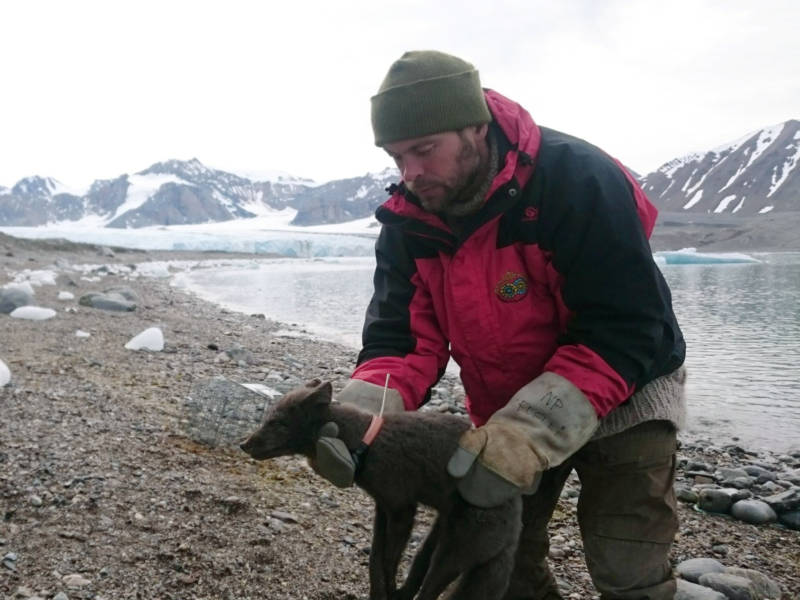A young female fox, just shy of her first birthday, stunned scientists by covering an unbelievable distance during a short, four-month trek. The animal, also known as a coastal or blue fox, traveled more than 2,700 miles from Spitsbergen, the largest island of the Svalbard Archipelago of Norway, to Ellesmere Island in Nunavut, Canada. The journey is among the longest dispersal events ever recorded for the species.
Researchers from the Norwegian Polar Institute first fitted the fox with a tracking collar in 2017 and released her into nature as part of a larger and ongoing study about the spatial ecology of arctic foxes, according to a report led by researchers Eva Fuglei and Arnaud Tarroux.
For months the fox stayed along the coastline of western Spitsbergen. Toward the end of March 2018, she took off, changing course several times when she met open water.
After finding ice-covered sea for the first time, the fox left Spitsbergen. Having traveled for 21 days and about 939 miles, she arrived in Greenland on April 16, 2018.
Similarly, in 2010 an adult female arctic fox in the Canadian Arctic set off on a journey. She traveled more than 2,800 miles in total but over a longer period of 5.5 months. She used sea ice to link distant regions, as did the Svalbard fox, which eventually arrived on Canada’s Ellesmere Island on July 1, 2018.

9(MDAxOTAwOTE4MDEyMTkxMDAzNjczZDljZA004))
